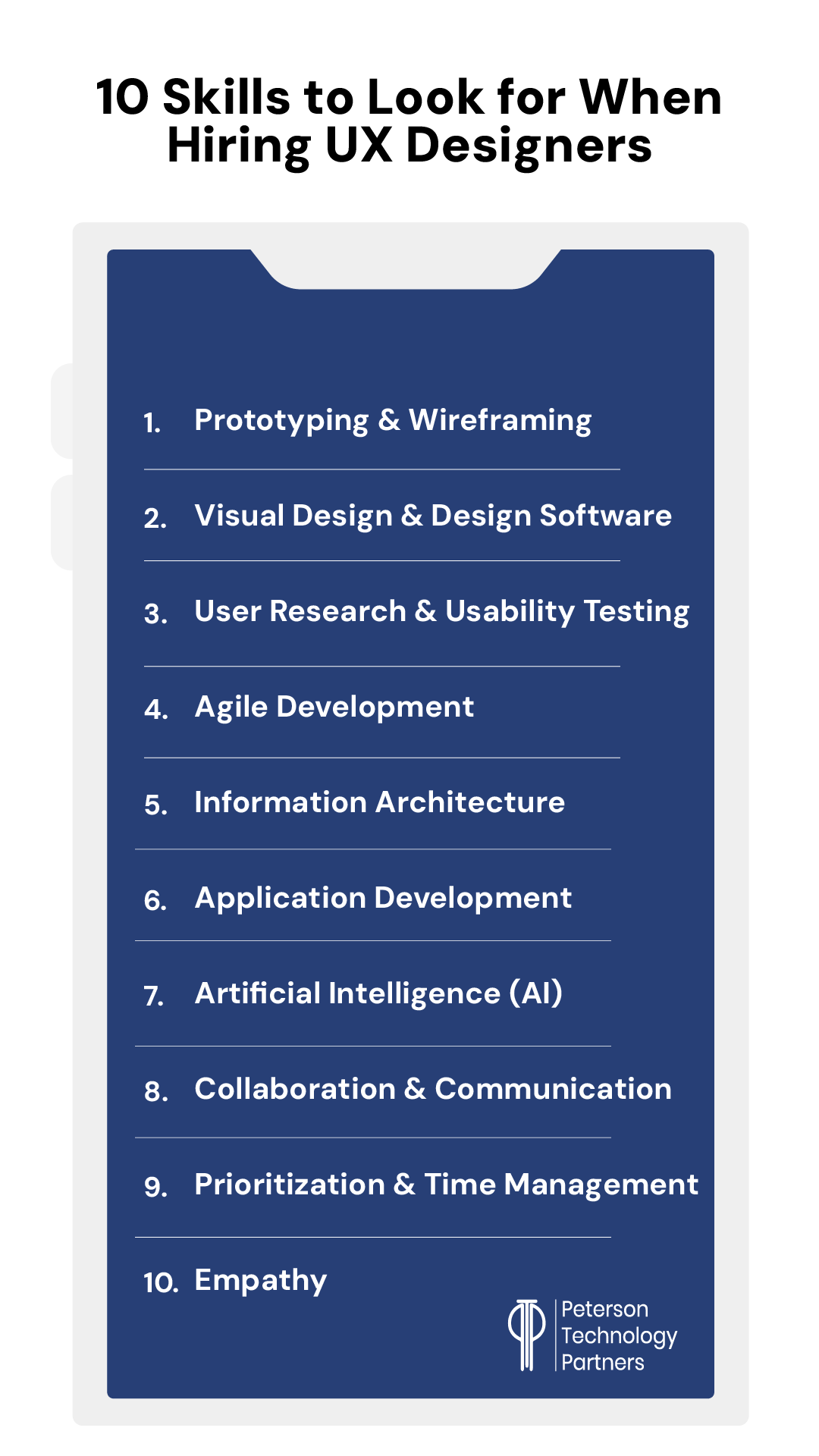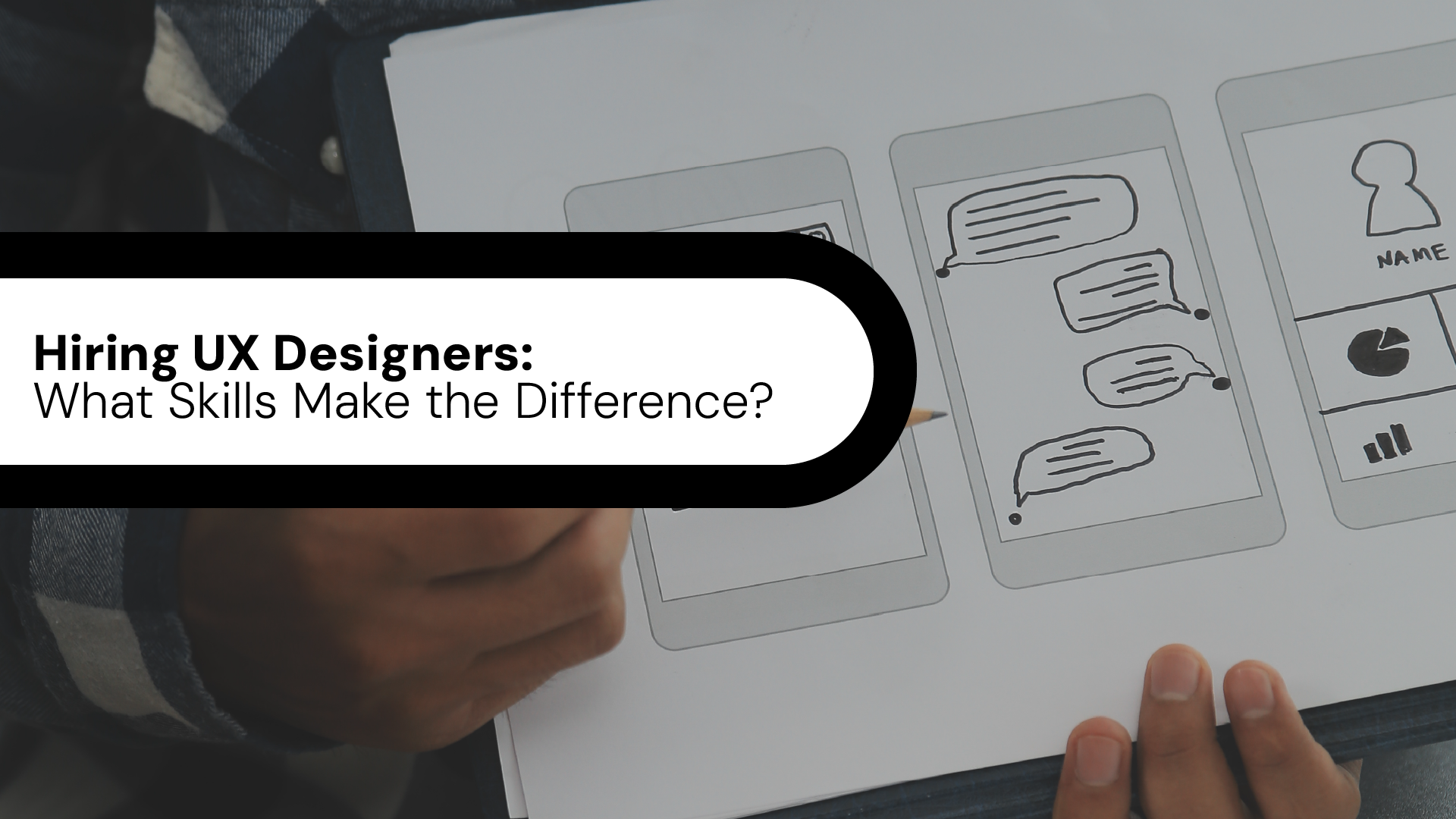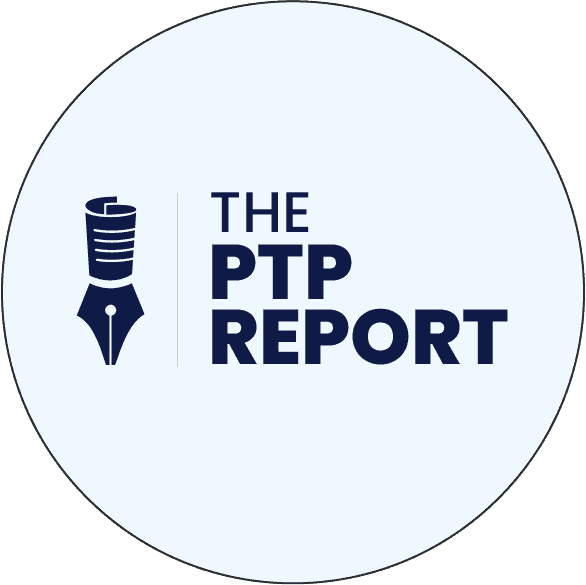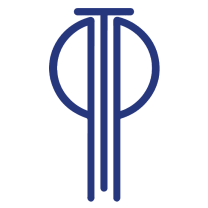Introduction
With the mind of an engineer and the eye of an artist, UX designers play a special role on a company’s IT team. And to fill such a special role, hiring teams need to identify the special skills that mark a successful candidate.
Equipped with the expertise of PTP’s seasoned tech recruiters, we have narrowed down the most important skills to look for in a UX designer. With these skills on your side, your organization can realize its vision of optimized products and satisfied customers.

Technical Skills for UX Designers
Prototyping, Wireframing, User Flows, Mockups
A UX designer will need to visualize the product before it’s executed, which requires a series of skills, including prototyping (creating a sample/simulation of a final product for testing and feedback), wireframing (creating a basic layout of a web page stripped of design), creating user flows (the steps a user takes when using a product), and generating mockups (realistic models of what a product will look like in its final form).
Visual Design and Design Software
Tech hiring managers without a design background may not naturally grasp the artistic side of UX design, but it is, indeed, a technical skill. While the quality of art in general can’t necessarily be measured, you can still quantify design proficiencies in the context of UX.
For example, you can assess a candidate’s expertise in typography, color theory, layout, icons, and general design theory—in addition to common design tools, like Adobe Photoshop, Illustrator, Figma, Sketch, and Canva.
User Research and Usability Testing
With the U in UX standing for “User,” it makes sense that UX designers will need to understand user habits and needs. They do this using a variety of methodologies, including interviews, focus groups, and field studies. Then, they analyze results using tools like heatmaps, session recordings, and usability testing platforms.
Agile Development
With many software development teams functioning in an Agile project management framework, UX designers will benefit from knowing how it works (this will also make onboarding easier). Fun fact: Agile and UX overlap so much that there is now the term “Agile UX design.”
Information Architecture
Information architecture (IA) describes how the elements of a product’s content are organized in terms of hierarchy, navigation, features, and interactions. For UX designers, this involves creating a detailed blueprint depicting where architectural components are placed and how they are labeled and displayed.
Application Development
While a UX designer doesn’t need to know the ins and outs of coding, it helps to have a basic understanding of languages like JavaScript, CSS, and HTML. With this knowledge, designers can better understand what’s possible to execute in an application and communicate these ideas with the development team.
Artificial Intelligence (AI)
This one shouldn’t be surprising, as most IT functions, especially ones involving content generation, use AI now. However, UX designers hardly need to be machine learning experts, as most use AI as a mere assistant, helping with tasks such as editing copy, research, and ideation. Simply put, experience with ChatGPT and a general understanding of prompt engineering should be enough.
[Hiring data scientists too? Check out our data scientist hiring checklist in this PTP Report.]
Soft Skills for UX Designers
Collaboration and Communication
As UX designers often work on cross-functional teams, it’s important they can work alongside people with different backgrounds and perspectives. Further, they need to be able to explain their work to colleagues who may not have UX knowledge, which is why excellent communication skills are key.
Prioritization and Time Management
You will likely need your UX designer to work on multiple projects at once with varying levels of urgency. A successful candidate will demonstrate the ability to prioritize tasks, working independently and with others to address the most critical needs, able to pivot and adapt at a moment’s notice.
Empathy
An empathetic designer can easily put themselves in the user’s shoes, allowing them to identify problems before they reach customers. Not to mention, empathy is an important skill in any workplace, as it nurtures team dynamics.
How PTP Can Help
Are you looking to build a successful IT team for your organization? For over 27 years, PTP has matched businesses with top IT talent, from UX designers to cybersecurity engineers to AI/ML experts. Learn more about how we can equip your team with future-ready IT pros!
Conclusion
A UX designer with the right balance of technical, artistic, and behavioral skills can transform how your users interact with your product.





